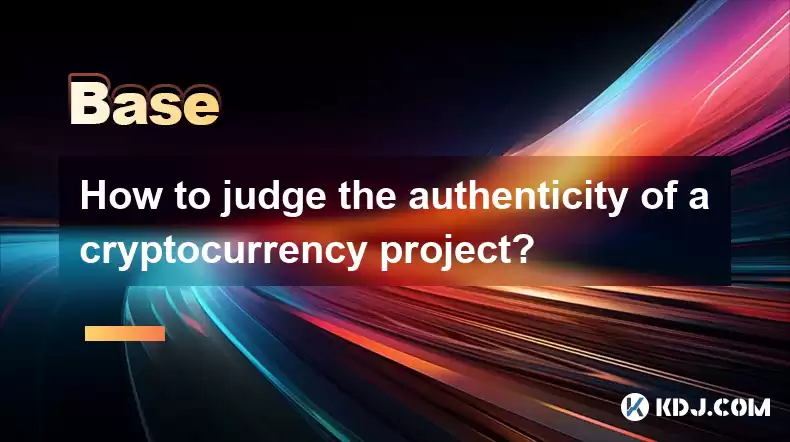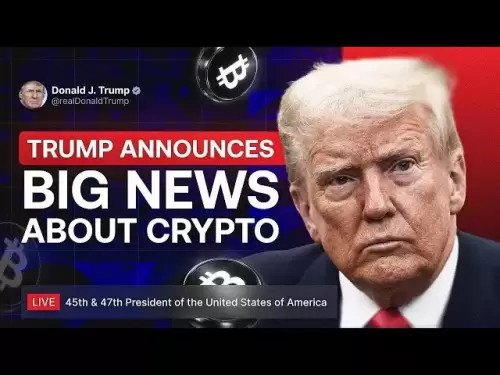-
 Bitcoin
Bitcoin $114200
-0.03% -
 Ethereum
Ethereum $3649
-0.25% -
 XRP
XRP $2.963
-2.31% -
 Tether USDt
Tether USDt $0.9997
-0.02% -
 BNB
BNB $761.0
-0.17% -
 Solana
Solana $164.6
-2.06% -
 USDC
USDC $0.9997
-0.02% -
 TRON
TRON $0.3321
-0.45% -
 Dogecoin
Dogecoin $0.2010
-2.49% -
 Cardano
Cardano $0.7282
-2.60% -
 Hyperliquid
Hyperliquid $37.56
-2.50% -
 Stellar
Stellar $0.3935
-3.18% -
 Sui
Sui $3.440
-1.36% -
 Chainlink
Chainlink $16.49
-1.80% -
 Bitcoin Cash
Bitcoin Cash $558.0
-1.38% -
 Hedera
Hedera $0.2407
-1.49% -
 Avalanche
Avalanche $22.27
-2.29% -
 Ethena USDe
Ethena USDe $1.001
0.00% -
 Litecoin
Litecoin $118.6
-4.00% -
 UNUS SED LEO
UNUS SED LEO $8.995
0.02% -
 Toncoin
Toncoin $3.190
-5.11% -
 Shiba Inu
Shiba Inu $0.00001214
-1.51% -
 Uniswap
Uniswap $9.655
-1.88% -
 Polkadot
Polkadot $3.638
-0.50% -
 Monero
Monero $292.1
-1.82% -
 Dai
Dai $1.000
-0.03% -
 Bitget Token
Bitget Token $4.312
-0.90% -
 Cronos
Cronos $0.1389
-0.32% -
 Pepe
Pepe $0.00001026
-2.44% -
 Aave
Aave $258.2
-1.12%
How to judge the authenticity of a cryptocurrency project?
Thoroughly vet cryptocurrency projects by examining the team's background, whitepaper details, community engagement, code audits, financial transparency, and legal compliance; anonymity and vague promises are major red flags.
Mar 05, 2025 at 05:31 pm

Key Points:
- Team Transparency and Background: Scrutinize the team's experience, track record, and public profiles. Anonymity is a major red flag.
- Whitepaper Scrutiny: Analyze the project's whitepaper for technical feasibility, realistic goals, and logical tokenomics. Look for inconsistencies and vague promises.
- Community Engagement and Sentiment: Observe community discussions on forums and social media. A healthy project fosters open communication and addresses concerns.
- Code Audit and Security: Independent code audits are crucial. Projects lacking these audits are risky investments. Explore the project's security measures.
- Financial Transparency: Verify the project's financial health, funding sources, and spending. Transparency in financial operations builds trust.
- Legal and Regulatory Compliance: Ensure the project adheres to relevant laws and regulations. Compliance minimizes legal risks.
How to Judge the Authenticity of a Cryptocurrency Project?
The cryptocurrency market is rife with scams and dubious projects. Knowing how to assess the authenticity of a cryptocurrency project is paramount to protecting your investment. This requires a multi-faceted approach, focusing on several key areas.
1. Investigate the Team Behind the Project:
A transparent and experienced team is a crucial indicator of legitimacy. Look for publicly available information about the team members. Are their backgrounds verifiable? Do they have relevant experience in blockchain technology, finance, or related fields? Anonymity or a lack of verifiable information is a significant red flag. Beware of projects that boast overly impressive credentials without substantial evidence.
2. Thoroughly Analyze the Whitepaper:
The whitepaper is the project's blueprint. A well-written whitepaper clearly outlines the project's goals, technology, tokenomics, and roadmap. Scrutinize the technical details. Is the proposed technology feasible? Are the goals realistic and achievable? Does the tokenomics model make logical sense? Look for inconsistencies, vague promises, or unrealistic claims. A poorly written or incomplete whitepaper suggests a lack of seriousness and professionalism.
3. Gauge Community Engagement and Sentiment:
A thriving and engaged community is a positive sign. Explore the project's presence on social media platforms, forums, and online communities. Observe the tone and nature of the discussions. Is the team responsive to community questions and concerns? Are there significant criticisms or red flags raised by community members? A lack of community engagement or a heavily controlled and censored community might indicate manipulation or a lack of transparency.
4. Verify Code Audits and Security Measures:
Independent code audits are vital for identifying vulnerabilities and security flaws. Reputable projects often commission these audits from respected security firms. The availability of these audits, along with details about the audit's findings and any remediation efforts, demonstrates a commitment to security. Examine the project's overall security measures, such as the use of multi-signature wallets and other security protocols. A lack of code audits or inadequate security measures raises significant concerns.
5. Assess Financial Transparency:
Transparency in financial matters is critical. Legitimate projects often disclose information about their funding sources, financial statements, and spending. Examine the project's token distribution, allocation, and vesting schedules. Are there any indications of insider trading or other unethical practices? A lack of financial transparency is a major warning sign. Beware of projects with unclear funding sources or opaque financial operations.
6. Check for Legal and Regulatory Compliance:
Ensure the project complies with relevant laws and regulations in its jurisdiction. Projects that operate outside the bounds of the law are inherently risky and could face legal challenges. This includes understanding KYC/AML compliance and any relevant securities regulations. A lack of legal and regulatory compliance exposes investors to potential legal and financial risks.
Common Questions and Answers:
Q: What are some red flags to watch out for in cryptocurrency projects?
A: Red flags include anonymous teams, unrealistic promises, poorly written whitepapers, lack of code audits, negative community sentiment, opaque financial operations, and a lack of legal compliance.
Q: How important are code audits in assessing a cryptocurrency project's authenticity?
A: Code audits are crucial. They identify security vulnerabilities that could lead to hacks or exploits, impacting the project's value and the investors' funds. Projects without audits carry significant risk.
Q: What is the role of the community in evaluating a cryptocurrency project?
A: A healthy, engaged community indicates transparency and provides valuable feedback. Observe community discussions for red flags or concerns raised by experienced members. However, remember that online communities can be manipulated, so use your critical thinking skills.
Q: How can I verify the legitimacy of a cryptocurrency project's team?
A: Look for verifiable information about team members, such as LinkedIn profiles, previous work experience, and educational backgrounds. Cross-reference this information with other sources to ensure its accuracy. Avoid projects with completely anonymous teams.
Q: What should I do if I suspect a cryptocurrency project is fraudulent?
A: Report your suspicions to the appropriate authorities. Consult with a financial advisor and consider seeking legal counsel if you have invested in the project. Do not continue to invest in a project you believe to be fraudulent.
Disclaimer:info@kdj.com
The information provided is not trading advice. kdj.com does not assume any responsibility for any investments made based on the information provided in this article. Cryptocurrencies are highly volatile and it is highly recommended that you invest with caution after thorough research!
If you believe that the content used on this website infringes your copyright, please contact us immediately (info@kdj.com) and we will delete it promptly.
- Coinbase, Financing, and the Crypto Market: Navigating Choppy Waters in NYC Style
- 2025-08-06 12:50:11
- Bitcoin in Indonesia: Crypto Education and Economic Strategy
- 2025-08-06 12:50:11
- DeriW Mainnet: Zero Gas Fees Revolutionize On-Chain Derivatives Trading
- 2025-08-06 10:30:11
- IOTA, Cloud Mining, and Eco-Friendly Crypto: A New York Investor's Take
- 2025-08-06 10:30:11
- Kaspa (KAS) Price Prediction: August 6 - Will It Break Free?
- 2025-08-06 10:50:12
- Pension Funds, Bitcoin ETFs, and Exposure: A New Era of Institutional Crypto Adoption
- 2025-08-06 12:55:12
Related knowledge

What is the difference between CeFi and DeFi?
Jul 22,2025 at 12:28am
Understanding CeFi and DeFiIn the world of cryptocurrency, CeFi (Centralized Finance) and DeFi (Decentralized Finance) represent two distinct financia...

How to qualify for potential crypto airdrops?
Jul 23,2025 at 06:49am
Understanding What Crypto Airdrops AreCrypto airdrops refer to the distribution of free tokens or coins to a large number of wallet addresses, often u...

What is a crypto "airdrop farmer"?
Jul 24,2025 at 10:22pm
Understanding the Role of a Crypto 'Airdrop Farmer'A crypto 'airdrop farmer' refers to an individual who actively participates in cryptocurrency airdr...

What is the difference between a sidechain and a Layer 2?
Jul 20,2025 at 11:35pm
Understanding the Concept of SidechainsA sidechain is a separate blockchain that runs parallel to the main blockchain, typically the mainnet of a cryp...

What is the Inter-Blockchain Communication Protocol (IBC)?
Jul 19,2025 at 10:43am
Understanding the Inter-Blockchain Communication Protocol (IBC)The Inter-Blockchain Communication Protocol (IBC) is a cross-chain communication protoc...

How does sharding improve scalability?
Jul 20,2025 at 01:21am
Understanding Sharding in BlockchainSharding is a database partitioning technique that is increasingly being adopted in blockchain technology to enhan...

What is the difference between CeFi and DeFi?
Jul 22,2025 at 12:28am
Understanding CeFi and DeFiIn the world of cryptocurrency, CeFi (Centralized Finance) and DeFi (Decentralized Finance) represent two distinct financia...

How to qualify for potential crypto airdrops?
Jul 23,2025 at 06:49am
Understanding What Crypto Airdrops AreCrypto airdrops refer to the distribution of free tokens or coins to a large number of wallet addresses, often u...

What is a crypto "airdrop farmer"?
Jul 24,2025 at 10:22pm
Understanding the Role of a Crypto 'Airdrop Farmer'A crypto 'airdrop farmer' refers to an individual who actively participates in cryptocurrency airdr...

What is the difference between a sidechain and a Layer 2?
Jul 20,2025 at 11:35pm
Understanding the Concept of SidechainsA sidechain is a separate blockchain that runs parallel to the main blockchain, typically the mainnet of a cryp...

What is the Inter-Blockchain Communication Protocol (IBC)?
Jul 19,2025 at 10:43am
Understanding the Inter-Blockchain Communication Protocol (IBC)The Inter-Blockchain Communication Protocol (IBC) is a cross-chain communication protoc...

How does sharding improve scalability?
Jul 20,2025 at 01:21am
Understanding Sharding in BlockchainSharding is a database partitioning technique that is increasingly being adopted in blockchain technology to enhan...
See all articles

























































































